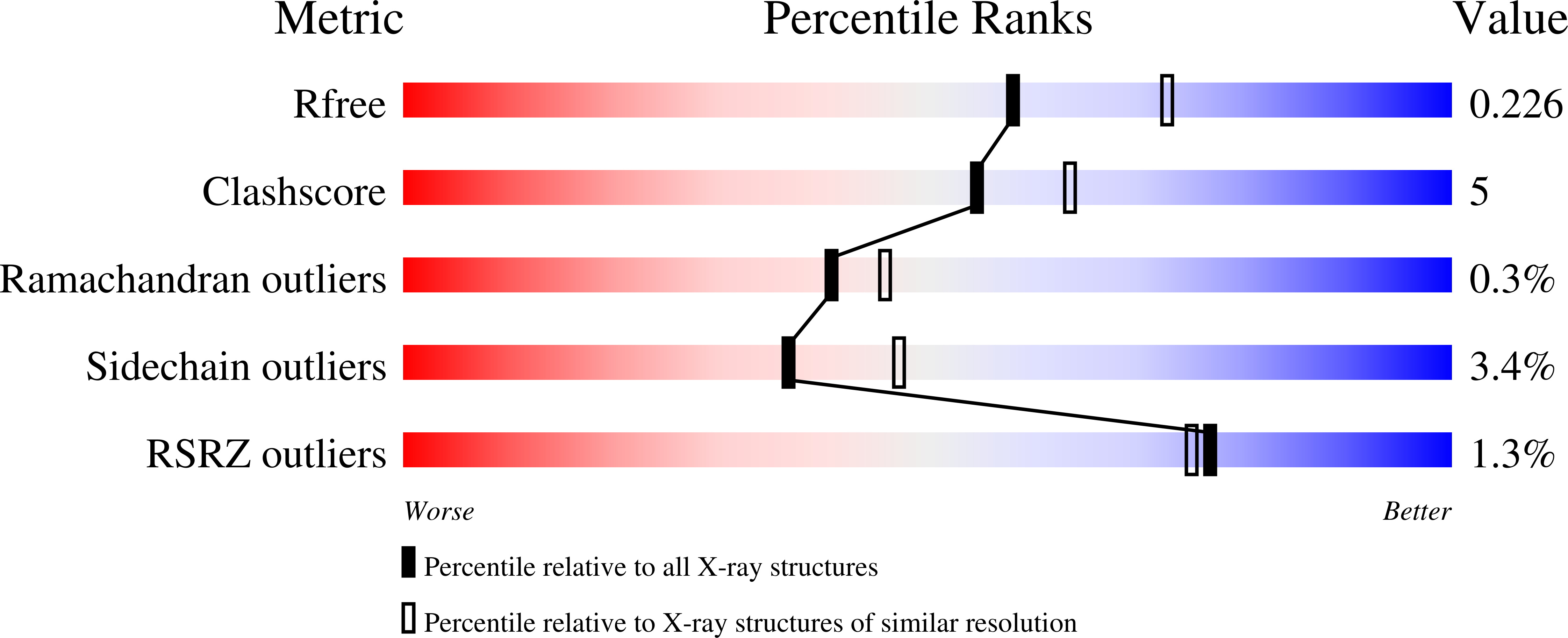The cation-pi box is a specific phosphatidylcholine membrane targeting motif.
Cheng, J., Goldstein, R., Gershenson, A., Stec, B., Roberts, M.F.(2013) J Biol Chem 288: 14863-14873
- PubMed: 23576432
- DOI: https://doi.org/10.1074/jbc.M113.466532
- Primary Citation of Related Structures:
4I8Y, 4I90, 4I9J, 4I9M, 4I9T - PubMed Abstract:
Peripheral membrane proteins can be targeted to specific organelles or the plasma membrane by differential recognition of phospholipid headgroups. Although molecular determinants of specificity for several headgroups, including phosphatidylserine and phosphoinositides are well defined, specific recognition of the headgroup of the zwitterionic phosphatidylcholine (PC) is less well understood. In cytosolic proteins the cation-π box provides a suitable receptor for choline recognition and binding through the trimethylammonium moiety. In PC, this moiety might provide a sufficient handle to bind to peripheral proteins via a cation-π cage, where the π systems of two or more aromatic residues are within 4-5 Å of the quaternary amine. We prove this hypothesis by engineering the cation-π box into secreted phosphatidylinositol-specific phospholipase C from Staphylococcus aureus, which lacks specific PC recognition. The N254Y/H258Y variant selectively binds PC-enriched vesicles, and x-ray crystallography reveals N254Y/H258Y binds choline and dibutyroylphosphatidylcholine within the cation-π motif. Such simple PC recognition motifs could be engineered into a wide variety of secondary structures providing a generally applicable method for specific recognition of PC.
Organizational Affiliation:
Department of Chemistry, Boston College, Chestnut Hill, Massachusetts 02467, USA.
















